Chenhao Yang
Predicting Driver's Perceived Risk: a Model Based on Semi-Supervised Learning Strategy
Apr 17, 2025Abstract:Drivers' perception of risk determines their acceptance, trust, and use of the Automated Driving Systems (ADSs). However, perceived risk is subjective and difficult to evaluate using existing methods. To address this issue, a driver's subjective perceived risk (DSPR) model is proposed, regarding perceived risk as a dynamically triggered mechanism with anisotropy and attenuation. 20 participants are recruited for a driver-in-the-loop experiment to report their real-time subjective risk ratings (SRRs) when experiencing various automatic driving scenarios. A convolutional neural network and bidirectional long short-term memory network with temporal pattern attention (CNN-Bi-LSTM-TPA) is embedded into a semi-supervised learning strategy to predict SRRs, aiming to reduce data noise caused by subjective randomness of participants. The results illustrate that DSPR achieves the highest prediction accuracy of 87.91% in predicting SRRs, compared to three state-of-the-art risk models. The semi-supervised strategy improves accuracy by 20.12%. Besides, CNN-Bi-LSTM-TPA network presents the highest accuracy among four different LSTM structures. This study offers an effective method for assessing driver's perceived risk, providing support for the safety enhancement of ADS and driver's trust improvement.
Optimal Beamforming Design for MIMO DFRC Systems with Transmit Covariance Constraint
Mar 06, 2023Abstract:This paper develops optimal beamforming design in a downlink multi-input-multi-output (MIMO) dual-function radar-communication (DFRC) system to maximize the weighted sum-rate of communicating users under the prescribed transmit covariance constraint for radar performance guarantee. In single-user case, we show that the transmit covariance constraint implies inherent orthogonality among beamforming vectors in use. Then leveraging a corollary of Cauchy's interlace theorem, we derive the globally optimal beamforming solution in closed form. For multi-user case, we exploit the connection between weighted sum-rate and weighted minimum-mean-squared-error (MMSE) to reformulate the problem, and develop a block-coordinate-descent (BCD) type algorithm with closed-form solution derived for the subproblem in each step and fast convergence to a locally optimal beamforming design. Numerical results validate the effectiveness of our proposed schemes.
A real-time dynamic obstacle tracking and mapping system for UAV navigation and collision avoidance with an RGB-D camera
Sep 17, 2022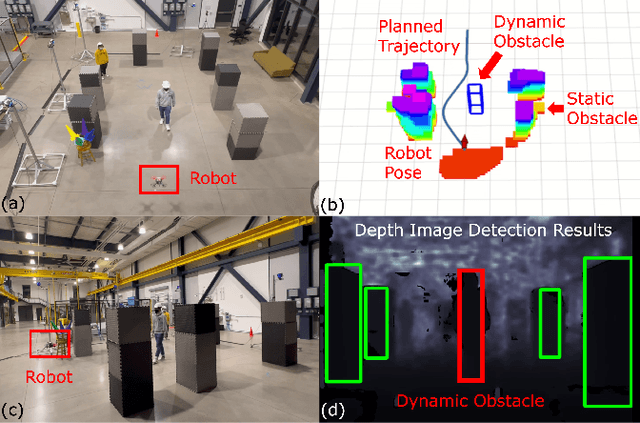

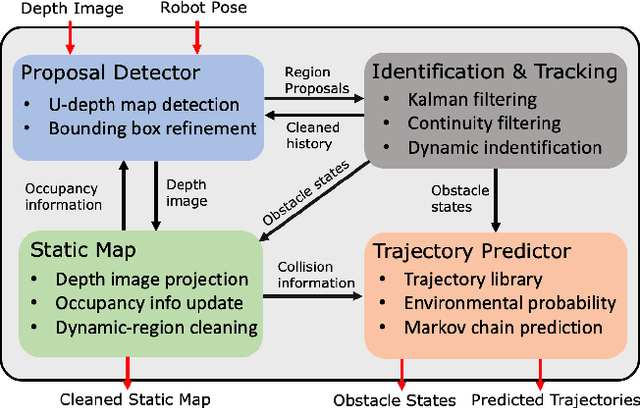
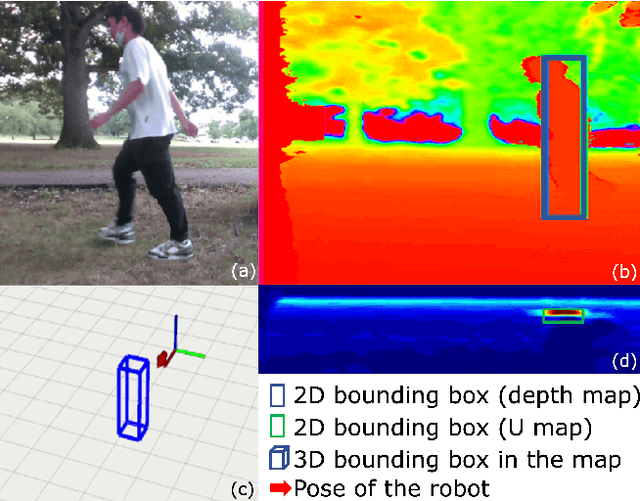
Abstract:The real-time dynamic environment perception has become vital for autonomous robots in crowded spaces. Although the popular voxel-based mapping methods can efficiently represent 3D obstacles with arbitrarily complex shapes, they can hardly distinguish between static and dynamic obstacles, leading to the limited performance of obstacle avoidance. While plenty of sophisticated learning-based dynamic obstacle detection algorithms exist in autonomous driving, the quadcopter's limited computation resources cannot achieve real-time performance using those approaches. To address these issues, we propose a real-time dynamic obstacle tracking and mapping system for quadcopter obstacle avoidance using an RGB-D camera. The proposed system first utilizes a depth image with an occupancy voxel map to generate potential dynamic obstacle regions as proposals. With the obstacle region proposals, the Kalman filter and our continuity filter are applied to track each dynamic obstacle. Finally, the environment-aware trajectory prediction method is proposed based on the Markov chain using the states of tracked dynamic obstacles. We implemented the proposed system with our custom quadcopter and navigation planner. The simulation and physical experiments show that our methods can successfully track and represent obstacles in dynamic environments in real-time and safely avoid obstacles.
Accurate position tracking with a single UWB anchor
May 21, 2020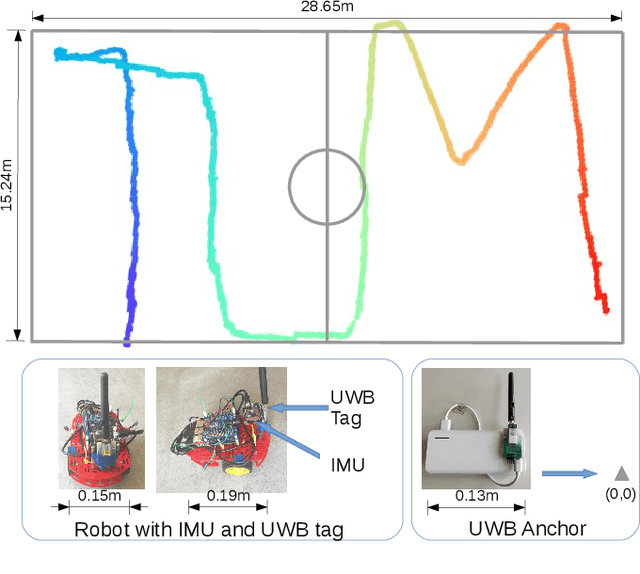
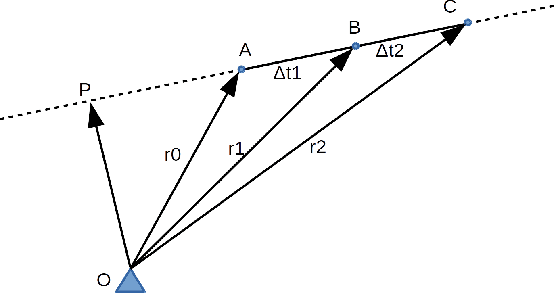
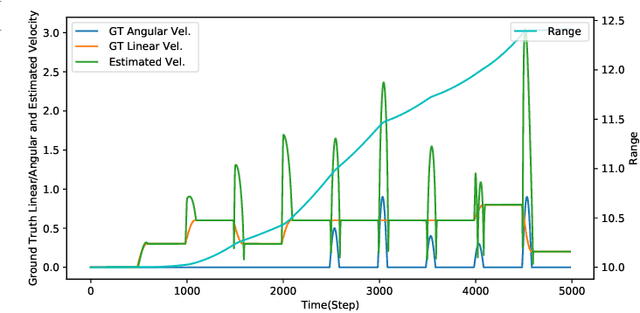
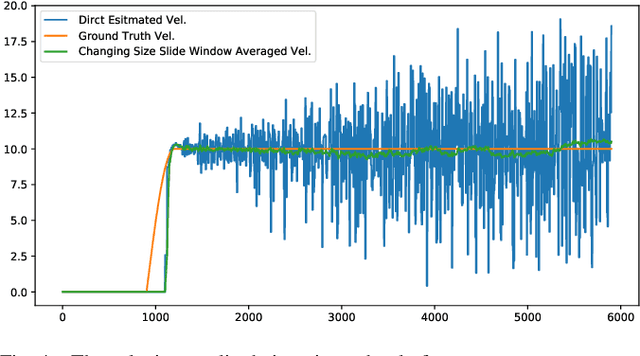
Abstract:Accurate localization and tracking are a fundamental requirement for robotic applications. Localization systems like GPS, optical tracking, simultaneous localization and mapping (SLAM) are used for daily life activities, research, and commercial applications. Ultra-wideband (UWB) technology provides another venue to accurately locate devices both indoors and outdoors. In this paper, we study a localization solution with a single UWB anchor, instead of the traditional multi-anchor setup. Besides the challenge of a single UWB ranging source, the only other sensor we require is a low-cost 9 DoF inertial measurement unit (IMU). Under such a configuration, we propose continuous monitoring of UWB range changes to estimate the robot speed when moving on a line. Combining speed estimation with orientation estimation from the IMU sensor, the system becomes temporally observable. We use an Extended Kalman Filter (EKF) to estimate the pose of a robot. With our solution, we can effectively correct the accumulated error and maintain accurate tracking of a moving robot.
 Add to Chrome
Add to Chrome Add to Firefox
Add to Firefox Add to Edge
Add to Edge